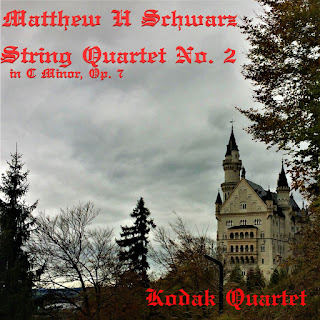Paul Royse - "Swinging Seraphim" album review
Paul Royse - Swinging Seraphim
Royse provides a great example of a classically trained composer turned indie-pop artist.
Swinging Seraphim is the latest release by record label Belts and Whistles. The album consists of six stunning art-pop songs for voice and piano, composed and performed by the Philadelphia-based Paul Royse, who also goes by Very Very Hot Evil. As a whole, the aesthetic of the songs lean more into a progressive rock/pop style, which is further strengthened by pop/rock mixing techniques of Johanna Baumann. The concept of the classical composer as an indie singer/songwriter has been becoming more and more popular. In contrast, Royse provides a great example of a classically trained composer turned indie-pop artist, rather than a true blend of the two genres.
All of the songs rely heavily on Royse' complex piano accompaniments. It is quite impressive to hear the composition/piano/voice all done by the same performer, but one has to wonder if it will be equally effective when performed live. Royse has such a solid grasp on crafting a short, memorable motive and finding ways to repeat it throughout the song or in some cases throughout the entire album. While the reliance on motives or licks is generally associated with popular music, it is how Royse treats his motivic style of composition which beings to push towards his classical side. He has quite a successful use of development and recontextualizing the repeated lines to continually spark interest. Also on the classical side, Royse's lush accompaniments at time take on the role of mood painting, with the spurring introduction to "Babbling Brooke" creating a feeling of rushing water, playing on the double meaning of the title.
While much can be said for Royse's impressive Romantic piano playing, which include the occasional quotation or nod to specific composers, his voice is a somewhat acquired taste. Royse's dependance on timbre-changing voice techniques like falsetto, vocal fry and wavering pitch instantly teleports the listener to the emo/prog-rock bands of the mid-to-late 2000s. That being said, Royse's text is both beautiful and emotional, with his dramatic prosodic setting allowing us to catch every word and create catchy rhythmic tension. He tends to double his vocal lines in the piano quite often, which in "Dorian" and "Swinging Seraphim" begin as fun and interesting, but quickly turn into being predictable. His general vocal sound and the amount and placement of doubling turns Swinging Seraphim into a more progressive rock/pop style, contrasting heavily with the dense classical-sounding piano accompaniment. While certainly classically inspired, one would be hard-pressed to label is as classical, making it a perfect fit for the contemporary art-pop music scene.




Comments
Post a Comment